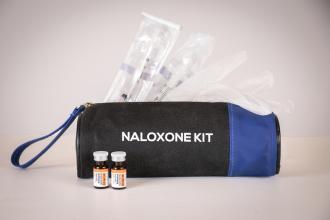New methadone dosing: Overdose dangers
New methadone is 10 times more concentrated than the currently compounded anhydrous methadone solution. Are we ready to prevent potential overdoses?
Between 1 February and 1 March 2014 Pharmacare will transition patients on methadone for opiate substitution therapy and analgesia from the currently compounded anhydrous methadone solution (1 mg/mL) to Methadose, a 10 mg/mL solution.[1,2] Methadose has been available for purchase by pharmacies in Canada since 2012 and since 1973 in the US. Although the benefits of Methadose are understood—consistent dosing, longer shelf life, painful if injected, ability to be stored unrefrigerated (if not diluted)—the transition to this stronger medication presents a potential public safety risk.
In BC there are 14572 patients registered[3] on methadone maintenance therapy (MMT) and some patients, under physician discretion, are permitted to take home daily doses (carries) up to a maximum of 35 days. Currently, methadone 1 mg/mL is dispensed diluted in an orange-flavored drink up to about 100 mL. Methadose is a red, cherry-flavored solution and, when undiluted, resembles many other commonly used over-the-counter medications. In BC new prescriptions are required starting 1 February 2014.
Methadose will be dispensed undiluted in small, individually dosed, child-resistant containers, which, if not locked up, could lead to increases in unintentional pediatric overdoses because 1 mL Methadose is a lethal dose in children.[4] The risk of unintentional adult overdoses during the transition is also of concern. There is a known risk of overdose from methadone during initiation, titration, and tapering of doses,[5] and now titration will be more difficult with the concentrated formulation. Patients on MMT should be adequately informed to prepare for the change, as the transition may increase psychosocial stress. Furthermore, in the event that doses are diverted, public awareness is important. By being aware of the upcoming changes and educating patients about the potential hazards, it is our goal to prevent methadone overdoses—especially through this transition period.
For more information visit http://towardtheheart.com, or contact the BC Drug and Poison Information Centre at 1 800 567-8911.
—Olivia Sampson, MD, MPH
Vancouver
—Jane Buxton, MBBS, MRCGP, MHSc, FRCPC
Vancouver
—Ashraf Amlani, MPH
Vancouver
References
1. College of Physicians and Surgeons of British Columbia. BC methadone program. Accessed 7 January 2014. www.cpsbc.ca/programs/bc-methadone-program/methadose.
2. College of Pharmacists of British Columbia. Key initiatives. Accessed 30 December 2013. www.bcpharmacists.org/about_us/key_initiatives/index/articles144.php.
3. College of Physicians and Surgeons of British Columbia. Annual Report 2012/2013. Accessed 19 December 2013. https://www.cpsbc.ca/about-us/board-committees/annual-report.
4. Shadnia S, Rahimi M, Hassanian-Moghaddam H, et al. Methadone toxicity: Comparing tablet and syrup formulations during a decade in an academic poison center of Iran. Clin Toxicol (Phila) 2013;51:777-782.
5. Latowsky, M. Methadone death, dosage and torsade de pointes: Risk-benefit policy implications. J Psychoactive Drugs 2006;38:513-519.

